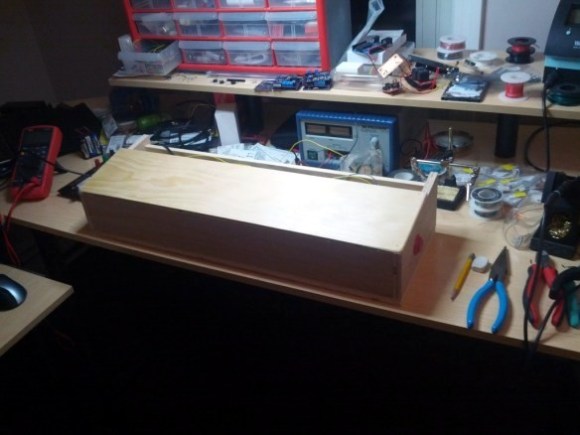
[Will] was toying with the idea of creating a scrolling LED marquee to display messages as his wedding in May. But you’ve got to crawl before you can walk so he decided to see what he could do with the MAX7219 LED driver chips. They do come in a DIP package, but the 24-pin 0.1″ pitch chip will end up being larger than the 8×8 LED modules he wanted to use. So he opted to go with a surface mount part and spun a PCB which makes the LEDs modular.
These drivers are great when you’re dealing with a lot of LEDs (like the motorcycle helmet of many blinking colors). Since they use SPI for communications it’s possible to chain the chips with a minimum of connections. [Will] designed his board to have a male header on one side and a female socket on the other. Not only does it make aligning and connecting each block simple, but it allows you to change your mind at any time about which microcontroller to use to command them. For his first set of tests he plugged the male header into a breadboard and drove it with an Arduino. We hope to hear back from him with an update when gets the final device assembled in time for the big day.
















